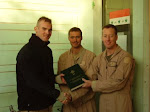The judgment of the Pope on the apparitions of Medjugorje is near.
Thursday, at the Vatican, was received the Bosnian cardinal Vinko Puljic, archbishop of Sarajevo. As of yesterday, also in Rome was cardinal Josip Bozanic, archbishop of Zagabria. Croatian sources have explained afterward that the dossier worked on for some time by the commission guided by Camillo Ruini has been placed on Francis' table. With the seals on the case, to make clear the delicate nature of the contents and the importance of the material. Four years of work for the group of theologians, doctors, and experts in mariology instituted by Benedict XVI is called to say if the apparitions of the the Madonna on the little hill in a town of Herzegovina might be supernatural. The incident has gone forward for more than thirty years, and from Rome still has not come a definitive answer.
Pope Francis spoke on so-called visionaries such as at Medjugorge last November 14 at Domus Sanctae Martae: "Curiosity pushes us to want to hear the Lord is here or there, or to make us say, 'But I know a visionary, a visionary, that receives letters from the Madonna, messages from the Madonna.' But the Madonna is a Mother. She is not a mailroom supervisor of the postal service, to send messages every day. This novelty estranges from the Gospel, from peace and wisdom, form the glory of God, the beauty of God." Because "Jesus says that the Reign of God does not come in a way to attract attention: it comes though wisdom."
Il giudizio del Papa sulle apparizioni di Medjugorje si avvicina. Giovedì, in Vaticano, è stato ricevuto il cardinale bosniaco Vinko Puljic, arcivescovo di Sarajevo. Da ieri, è a Roma anche il cardinale Josip Bozanic, arcivescovo di Zagabria. Fonti croate hanno poi spiegato che il dossier su cui lavora da tempo la commissione guidata da Camillo Ruini sta per essere posato sul tavolo di Francesco. Con i sigilli del caso, a rimarcare la delicatezza del contenuto e l’importanza della materia. Quattro anni di lavoro per il gruppo di teologi, medici, psicologi ed esperti di mariologia istituito da Benedetto XVI e chiamato a dire se nelle apparizioni della Madonna sulla collinetta di un paesino dell’Erzegovina ci sia del soprannaturale. La vicenda va avanti da più di un trentennio, e da Roma non è ancora giunta una risposta definitiva.
Si esprimeva così, il 14 novembre scorso, a Santa Marta: “La curiosità ci spinge a voler sentire che il Signore è qua oppure è là; o ci fa dire: ‘Ma io conosco un veggente, una veggente, che riceve lettere della Madonna, messaggi dalla Madonna’. Ma la Madonna è Madre! Non è un capoufficio della Posta, per inviare messaggi tutti i giorni. Queste novità allontanano dal Vangelo, dalla pace e dalla sapienza, dalla gloria di Dio, dalla bellezza di Dio”. Perché “Gesù dice che il Regno di Dio non viene in modo da attirare l’attenzione: viene nella saggezza”.
Thursday, at the Vatican, was received the Bosnian cardinal Vinko Puljic, archbishop of Sarajevo. As of yesterday, also in Rome was cardinal Josip Bozanic, archbishop of Zagabria. Croatian sources have explained afterward that the dossier worked on for some time by the commission guided by Camillo Ruini has been placed on Francis' table. With the seals on the case, to make clear the delicate nature of the contents and the importance of the material. Four years of work for the group of theologians, doctors, and experts in mariology instituted by Benedict XVI is called to say if the apparitions of the the Madonna on the little hill in a town of Herzegovina might be supernatural. The incident has gone forward for more than thirty years, and from Rome still has not come a definitive answer.
Pope Francis spoke on so-called visionaries such as at Medjugorge last November 14 at Domus Sanctae Martae: "Curiosity pushes us to want to hear the Lord is here or there, or to make us say, 'But I know a visionary, a visionary, that receives letters from the Madonna, messages from the Madonna.' But the Madonna is a Mother. She is not a mailroom supervisor of the postal service, to send messages every day. This novelty estranges from the Gospel, from peace and wisdom, form the glory of God, the beauty of God." Because "Jesus says that the Reign of God does not come in a way to attract attention: it comes though wisdom."
Il giudizio del Papa sulle apparizioni di Medjugorje si avvicina. Giovedì, in Vaticano, è stato ricevuto il cardinale bosniaco Vinko Puljic, arcivescovo di Sarajevo. Da ieri, è a Roma anche il cardinale Josip Bozanic, arcivescovo di Zagabria. Fonti croate hanno poi spiegato che il dossier su cui lavora da tempo la commissione guidata da Camillo Ruini sta per essere posato sul tavolo di Francesco. Con i sigilli del caso, a rimarcare la delicatezza del contenuto e l’importanza della materia. Quattro anni di lavoro per il gruppo di teologi, medici, psicologi ed esperti di mariologia istituito da Benedetto XVI e chiamato a dire se nelle apparizioni della Madonna sulla collinetta di un paesino dell’Erzegovina ci sia del soprannaturale. La vicenda va avanti da più di un trentennio, e da Roma non è ancora giunta una risposta definitiva.
Si esprimeva così, il 14 novembre scorso, a Santa Marta: “La curiosità ci spinge a voler sentire che il Signore è qua oppure è là; o ci fa dire: ‘Ma io conosco un veggente, una veggente, che riceve lettere della Madonna, messaggi dalla Madonna’. Ma la Madonna è Madre! Non è un capoufficio della Posta, per inviare messaggi tutti i giorni. Queste novità allontanano dal Vangelo, dalla pace e dalla sapienza, dalla gloria di Dio, dalla bellezza di Dio”. Perché “Gesù dice che il Regno di Dio non viene in modo da attirare l’attenzione: viene nella saggezza”.












